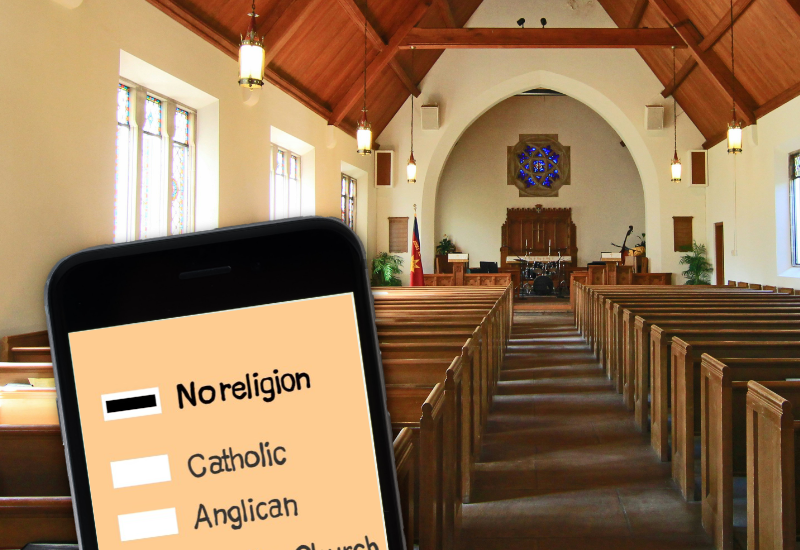At the heart of the Special Envoy’s Plan to Combat Antisemitism recently released by Jillian Segal, Australia’s Special Envoy to Combat Antisemitism, is a flawed definition of ‘antisemitism’ published in 2016 by the International Holocaust Remembrance Alliance (IHRA). Unfortunately, it has since been unthinkingly adopted by many other organisations, including the Australian government in 2021.
This is despite the fact that the full title of the document from which it is taken is the ‘IHRA non-legally binding working definition of antisemitism’ [my emphasis], which seems to imply: (a) it was not intended to inform any legislation, as the Segal report recommends; (b) it was a ‘working’ definition – in other words, a tentative definition needing further refinement before it can be considered authoritative.
The definition reads as follows:
Antisemitism is a certain perception of Jews, which may be expressed as hatred toward Jews.
The definition has faced considerable criticism from both Jewish and non-Jewish quarters since it was released.
The imprecise and unsatisfactory definition purports to be elucidated by a description of its ‘manifestations’:
Rhetorical and physical manifestations of antisemitism are directed toward Jewish or non-Jewish individuals and/or their property, toward Jewish community institutions and religious facilities.
These two sentences together constitute the wording that has been adopted by Segal as the mainstay of her report. She calls it “best practice in identifying antisemitism” and urges:
…the Australian government should require consistent application and adoption of the IHRA definition across all levels of government, public institutions and regulatory bodies. This will provide a unified framework for identifying, educating on, monitoring and responding effectively to antisemitic incidents.
Rather than providing a clear understanding of antisemitism, the so-called definition is rather equivocal. It says antisemitism is “a certain perception of Jews” without saying what that “certain perception” is.
What does “certain” even mean in this context? If it’s left out, does the phrase lose any meaning? Why not “a perception of Jews … [etc]”? At best, it is saying that there are a number of ways of perceiving Jews, and antisemitism is one of them. But this is no help at all in understanding what antisemitism actually is.
The alleged definition then goes on to give a short itemisation of how antisemitism is “expressed” or “manifested”. But even this is equivocal. It says antisemitism “may be expressed … [etc]”. If you say something “may be X”, then you are implying that it also “may not be X”. So what this clause is saying, in effect, is that “antisemitism may or may not be expressed as hatred … [etc]”. This is not very enlightening. It raises the question of whether there actually are forms of antisemitism that do not involve hatred of the Jews. It is hard to think of what they might be.
Next, antisemitism “may be expressed as hatred”. But ‘hatred’ is not an expression; it is the emotional state that you experience. It is an intense feeling, to be sure. But feelings are not expressions; they are experiences.
Feelings may be expressed in a range of ways. If you do feel hatred towards someone or something, you may, of course, go on to express that hatred in your actions and statements. But the expression is not the feeling, as this poorly-written pseudo-definition implies.
The second sentence lists a number of the targets that expressions of antisemitism may be directed towards. This is expanded into a list of eleven “[c]ontemporary examples of antisemitism” which Segal includes as part of the definition. So they need to be examined in any consideration of the document.
The IHRA states that contemporary examples of antisemitism – including in public life, the media, schools, the workplace, and the religious sphere – could include, but are not limited to, the following examples:
- Calling for, aiding, or justifying the killing or harming of Jews in the name of a radical ideology or an extremist view of religion.
- Making mendacious, dehumanising, demonising, or stereotypical allegations about Jews as such or the power of Jews as collective — such as, especially but not exclusively, the myth about a world Jewish conspiracy or of Jews controlling the media, economy, government or other societal institutions.
- Accusing Jews as a people of being responsible for real or imagined wrongdoing committed by a single Jewish person or group, or even for acts committed by non-Jews.
- Denying the fact, scope, mechanisms or intentionality of the genocide of the Jewish people at the hands of National Socialist Germany and its supporters and accomplices during World War II (the Holocaust).
- Accusing the Jews as a people, or Israel as a state, of inventing or exaggerating the Holocaust.
- Accusing Jewish citizens of being more loyal to Israel, or to the alleged priorities of Jews worldwide, than to the interests of their own nations.
- Denying the Jewish people their right to self-determination – for example, by claiming that the existence of a state of Israel is a racist endeavor.
- Applying double standards by requiring of it a behavior not expected or demanded of any other democratic nation.
- Using the symbols and images associated with classic antisemitism (such as claims of Jews killing Jesus or blood libel) to characterise Israel or Israelis.
- Drawing comparisons of contemporary Israeli policy to that of the Nazis.
- Holding Jews collectively responsible for actions of the state of Israel.
This is not the place to go through these statements one by one. But the overriding problem with this list is that much of it conflates prejudice against Jewish people, which is totally unacceptable, with legitimate criticism of Israel. They are clearly not the same thing.
Seven of the eleven items refer directly to Israel. The collective effect of this is to put untenable limits on freedom of thought and freedom of speech when considering and discussing Zionism, the state of Israel and the actions of its current government.
The ongoing existence of sometimes rampant antisemitism is one of the most atrocious aspects of the history of European civilisation, and it must be called out and opposed whenever it occurs. But the cause of anti-antisemitism will not be advanced by clumsy attempts like this to protect Israel from legitimate criticism by bracketing such criticism together with such real antisemitic horrors such as the Holocaust.
Some Jews opposed the Zionist project at the time. Were they ‘antisemitic’? And, today, some Israelis are currently very critical of the behavior of their current Israeli government – about 70 per cent of them according to some reports. Are they ‘antisemitic’?
If we are to minimise antisemitism in our society, we must do so sensibly and not at the expense of a free and open society.
And, in doing so, we must not forget the need to protect other discriminated groups in our community, such as our First Nations and Muslim citizens.
Published 27 July 2025.
If you wish to republish this original article, please attribute to Rationale. Click here to find out more about republishing under Creative Commons.
Photo by Miguel Baixauli on Unsplash.








